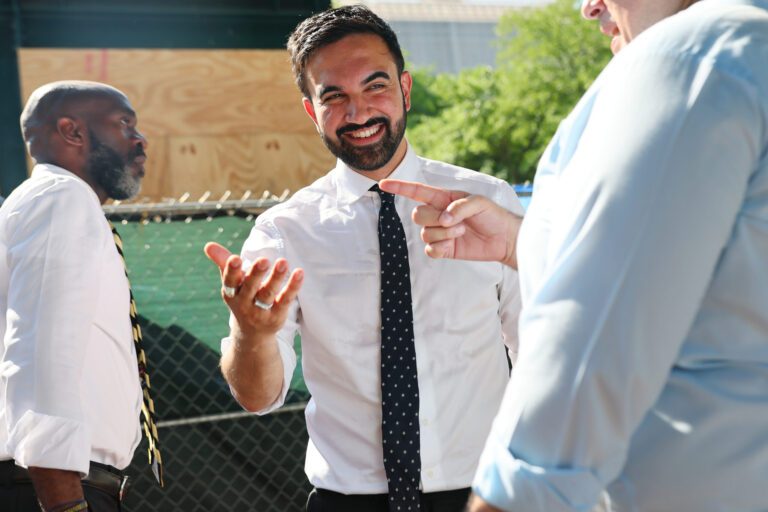The Rise of Socialism Among Young Voters: Understanding the Shift
The recent victory of Assemblyman Zohran Mamdani in the Democratic primary for mayor of New York City has sent shockwaves through political circles. This unexpected outcome may signal the onset of a socialist movement gaining traction nationwide, particularly among young and college-educated voters. A staggering 62% of this demographic backed Mamdani, reflecting a seismic shift in political values and expectations.
The Impact of Student Debt on Political Ideology
Increasing Student Loan Burden
Over recent years, student loan debt has become a growing crisis in America. According to the U.S. Federal Reserve, national student loan debt has skyrocketed from $520 billion in 2006 to an eye-watering $1.73 trillion. This financial burden affects millions:
- 58% of millennials with bachelor’s degrees are in debt.
- 57% of Gen Z graduates carry student loan burdens.
Disillusionment with Traditional Economic Systems
As highlighted by researchers like Preston Cooper of the American Enterprise Institute, many graduates find themselves in a cycle of debt with little hope of breaking free:
"Too often, people take on tens of thousands of dollars of debt for an education that doesn’t justify itself financially."
This frustration is increasingly being channeled into support for socialist policies as young people feel shortchanged by both educational institutions and government policies.
Rising Favorability Toward Socialism
A Cato/YouGov survey reveals significant changes in attitudes among young adults:
- 62% of Americans under 30 now view socialism favorably.
- A notable 34% of respondents expressed positive feelings towards communism.
This surge in interest often reflects a growing disdain for capitalism, as highlighted by Cato Institute senior editor, Michael Chapman:
“What unites young people who identify as socialists is a disdain for capitalism and a preference for collectivism over individualism.”
The Role of Social Media
Mamdani’s success was amplified by strategic social media engagement, including campaigns like "Hot Girls for Zohran," drawing in younger voters. His candid message advocating for radical government intervention has resonated profoundly, emphasizing the need to “unrig” the system.
Urban Centers as Hotbeds for Socialism
Cities such as New York, San Francisco, and Chicago have become focal points for socialist-aligned policies. Notable examples include:
- Brandon Johnson, backed by the Democratic Socialists of America (DSA), serving as Mayor of Chicago.
- Karen Bass in Los Angeles, supported by DSA-aligned city council members.
While it’s challenging to determine whether this trend directly correlates with rising student debt, the shared narrative of economic struggle ties these movements together.
Historical Context: The Link Between Debt and Socialism
David Friedberg, a business entrepreneur, argues that:
“The debt and deficit will ultimately lead to socialism, as it has every time in history when too much debt burdens a democracy.”
This correlation supports claims that economic hardship among younger generations is driving them toward socialist solutions.
Policy Proposals and Potential Solutions
The Democratic Socialists of America, of which Mamdani is a member, champions student debt cancellation as a primary goal. Their vision includes:
- Reforming student loan policies.
- Advocating for free public education.
Some experts, like Benjamin Ginsberg from Johns Hopkins University, emphasize the need to rethink the education financing system:
“Hundreds of thousands of kids have been sold expensive degrees for which there is little or no demand in the marketplace.”
Potential reforms could include making it easier to discharge student loans in bankruptcy, a mechanism currently restricted compared to other consumer debts.
Alternatives to Federal Student Loans
Friedberg proposes that free markets should take over student lending, pushing universities to maintain competitive pricing and ensuring degrees equate to job security. However, critics argue this could restrict access for students pursuing less lucrative fields.
Public Sentiment and the Future
Polling reveals that many first-year college students prioritize job security when choosing their majors. The increasing demand for a worthwhile return on investment fuels the drive for economic reform.
Conclusion: The Road Ahead for Young Voters
While Assemblyman Mamdani and other socialist-leaning politicians channel the sentiments of discontent into advocacy for systemic reform, history offers a cautionary tale about the trajectory of socialist movements. As Friedrich Hayek warned in The Road to Serfdom:
“The rise of fascism and Marxism was not a reaction against socialist trends, but a necessary outcome of those tendencies.”
The evolving landscape of politics among young Americans may depend significantly on whether society can alleviate the financial burdens faced by its youngest citizens. As the conversation evolves, it’s clear that the intersection of education, debt, and political ideology will continue to shape the future of American governance.
For a more in-depth understanding of student debt issues, visit Federal Student Aid or consult resources from Cato Institute.


